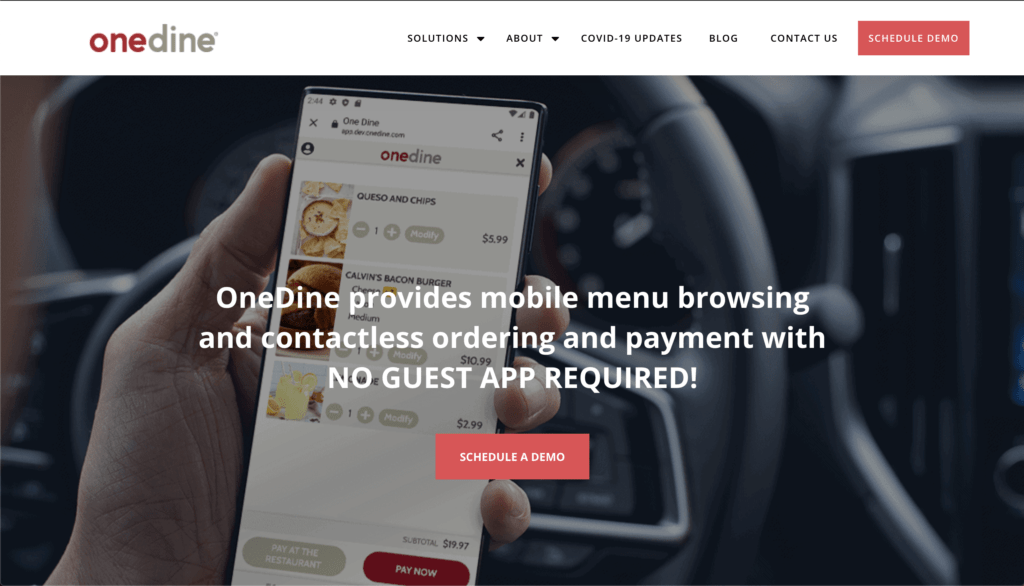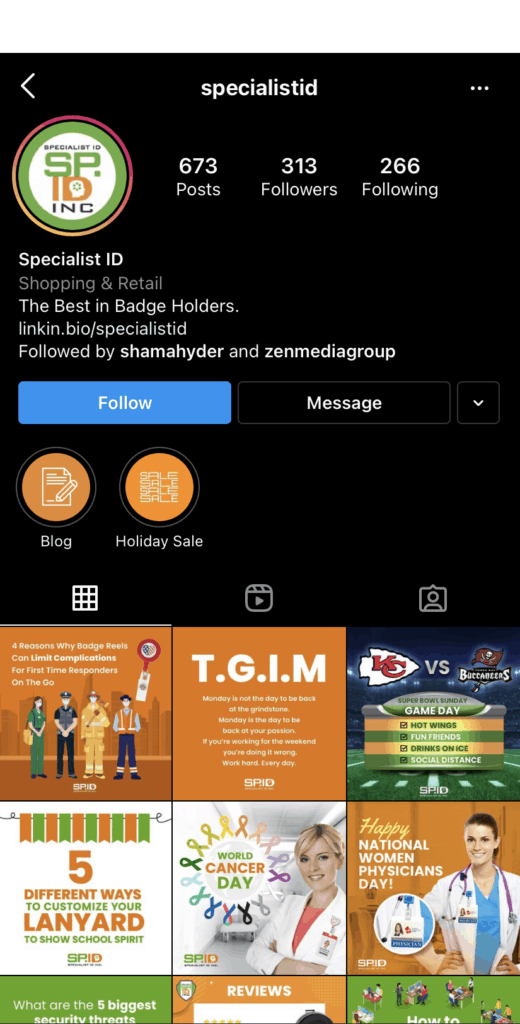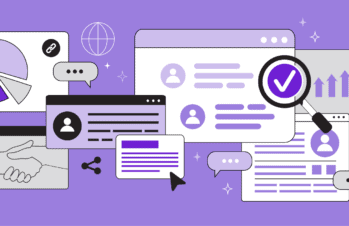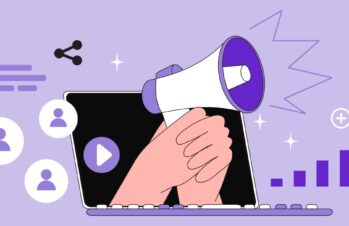What do B2B clients want in 2023?
Much of it won’t surprise you: remote service, self-service options, and an e-commerce approach even for large purchases.
However, according to the latest McKinsey survey, B2B clients have gone beyond just wanting digital sales options. They want an omnichannel approach—one that allows for a seamless purchase experience no matter which channel they’re using or how they’re switching channels throughout the process.
99% of B2B buyers prefer the digital self-serve model, and they’re comfortable spending $50K or more online. In fact, 32% of B2B buyers would spend up to $500k online.
If you want your B2B marketing strategy to thrive in 2023, you need to adapt. Business-to-business interaction has changed, like everything else, with the shifts that came because of the pandemic. Companies and consumers increasingly rely on digital components to find what they need, be it clients, providers, or connections.
Related post: How COVID-19 has changed the B2B buyer behavior
There’s a new normal in sales this year. We’re diving into it to break down how companies can successfully sell B2B in 2023.
As a B2B PR firm, we have multiple strategies that create meaningful connections that convert our clients. Our work begins in the digital sphere. Unlike traditional PR agencies, we focus on creating digital experiences worthy of your audience and worthy of attention. We combine a strategy with studied business objectives to create quantifiable results in the sales pipeline.
In 2023, successful sales rely on PR and marketing. They must tell a clear story because, at the end of the day, we know one thing to be true above all else: Mindshare = Market share.
What is B2B sales marketing?
B2B sales marketing is a specialized form of marketing focusing on selling products or services to other businesses rather than individual consumers. The process of B2B sales marketing is centered around building relationships with potential customers and providing them with relevant and valuable information to help them make informed purchasing decisions.
B2B sales marketing strategies often involve a multi-channel approach, including trade shows, industry events, email marketing, content marketing, and targeted advertising. The goal is to reach and engage decision-makers within target businesses and establish the company as a trusted and knowledgeable provider of products or services in the industry.
To be successful in B2B sales marketing, companies must understand the specific needs and challenges of their target customers, as well as the competitive landscape of the industry. This requires a deep understanding of the target market, including potential customers’ pain points and buying criteria. By leveraging this knowledge, B2B sales marketers can create compelling messages and campaigns that effectively communicate the value of their offerings and establish the company as a leader in the industry.
8 B2B Sales Marketing Strategies
1. Begin B2B Digital Marketing
Start with a website that converts.
Start with a website that converts.
OneDine, a client in the hospitality/tech space, underwent a brand overhaul at the start of the pandemic. B2B sales for OneDine were optimized in two ways. Their moment came when their technology met a need during the pandemic, conveyed with simple and straightforward messaging. It made it easy for customers to know what they were getting into and to choose the product.
We created an online presence for OneDine that conveys clear uses and functions of their system—simplifying the decision-making process at a time when potential clients were likely overloaded with difficult decisions.
Sales for OneDine were driven by its clear messaging, accessible information, and consistent portrayal across media platforms. In less than 60 days, our digital campaign generated over 44 media hits, reached a readership of 196M across media placements and resulted in signing over 1,500 new restaurants. All during the onset of a global pandemic.
The social media strategy for the company included the same clear communication and consistent messaging. It showed that potential clients could spot the company’s presence, activity, and engagement from a single glance. With our campaign, OneDine received more than 1.3 million video views and more than 10K social shares.

2. Make the most of the situation and embrace virtual B2B marketing.
Companies can no longer afford to wait for life to return back to a pre-pandemic sense of normal; it’s time to adapt. For B2B in marketing to be successful in 2023, companies (and their CMOs) need to get with the program and go digital.
This happens in two ways: with the client and the company’s online presence.
Client interactions may seem like a no-brainer. If we’re interacting less in person than we used to, then something is in its place. According to McKinsey, B2B decision-makers prefer videoconferencing for communication.
Companies must embrace this new preference and integrate it into their communications with prospective clients.
Second, is online presence the foundation of digital communication? Why? Though it may not be the one-on-one interaction in which traditional sales were founded, it’s where first impressions are made. That’s why it’s essential for any B2B company to have a strong digital presence.
3. Make your presence known: Use social media for B2B sales and B2B marketing.
The necessity of a clear, cohesive digital strategy — like the ones we implement for our clients — expands beyond company websites. Social media acts as a footprint, and in the case of such unprecedented (sorry, we just had to use that word) times, it shows potential clients that you’re still active and thriving during a pandemic.
Constant social engagement, a set of digital footprints, sets you apart from competitors because it goes beyond traditional PR and marketing tactics. B2B companies are still developing their social media strategies, in contrast to B2C companies selling through such platforms.
Be on the cutting edge of B2B social media marketing to drive sales. Use it to your advantage, and post everyday. One of our eCommerce clients, Specialist ID, utilizes social media to convey a consistent brand identity, and to engage in larger conversations.

For example, the company sells ID badge holders. Want to know which people in the pandemic use badge holders? First responders and essential workers. Specialist ID optimized their place in their field by highlighting what they offer to those vital members of society during the pandemic.
The social media marketing strategy that we’ve created and cultivated, showcases a brand that is adapting to and thriving during a pandemic. It shows that Specialist ID, as a company, is part of the shared experience of the pandemic and is adding something (like simplifying security by offering badge holders for first responders) of value in these times. Business was also driven by a successful paid ads strategy which yielded successful RoAS for the campaign.
The paid ads led to a 30% sales increase year over year, and the brand’s social went from a following of zero to reaching hundreds of thousands each month. Because of our campaign, Specialist ID has an ROAS of 4.83.
4. Go where the people are: Use social media to interact with potential B2B clients
Here’s a traditional sales strategy that works even when sales go online: find common interests. Sales are still personal, even if interaction isn’t face-to-face. This is where social media comes into play in terms of B2B sales strategy.
Use social media to research, analyze and interact with potential clients. Online profiles, both of companies and of their team members, provide a wealth of information to help your sales strategists identify — and then provide solutions for — the problems that potential clients are facing.
Investigate who your prospective clients are following, what posts they like, and who they interact with. Then, place yourself (or your company) in the conversation by adding value to those same conversations.
5. Showcase brand relevance
At their core, successful businesses meet needs. What’s changed in 2023, though, is the heightened focus on brand relevance. The shared experience of living through a pandemic has changed the way people interact, both professionally and personally.
Brands and businesses are like people. Customers want to know who they’re working with, what the company values, and the type of culture they can expect to encounter.
This is vital for B2B sales, or sales in general, because no one wants to work with an out-of-touch provider or product. Do you know anyone still using a Motorola flip phone (not using it to be funny)? Probably not.
Brand relevance can be communicated in many ways. Building on the foundation of solidified identity—like consistent messaging on a website or intentional social media strategy—brands can participate in larger societal conversations. This happens on social media, whether that means putting your brand’s own spin on the most recent meme or a more serious contribution to conversations in your industry.
Showcase your company’s work, your company’s makeup, and your company’s initiatives. You don’t want all of your interactions with potential clients to be solely a sales pitch; you need to build a recognizable presence.
7. Leverage chat bots or AI assistants
Chatbots and AI assistants can automate certain parts of the sales process and help improve efficiency and reduce friction in the buying process. Chatbots can be programmed to respond to common customer inquiries or issues, freeing up sales teams to focus on more complex or strategic tasks. B2B companies can also leverage chatbots to guide potential customers through the buying process, providing personalized recommendations and product information.C
B2Bs can also use chatbots and AI assistants to gather customer data and insights, and use these insights to improve the overall customer experience and inform marketing strategies. Track which products or services are most frequently searched for, or which types of inquiries are most common. Your sales team will be able to identify areas for improvement and focus on more strategic or high-value tasks.
8. Focus on customer retention
Rather than solely focusing on acquiring new customers, some B2B companies have found success by putting more emphasis on customer retention and loyalty, investing in post-sale support and engagement to keep customers satisfied and coming back for more. This can lead to more repeat business, as well as positive word-of-mouth referrals.
Bonus B2B sales and marketing tips
Collaborate with partners and influencers.
Collaborating with partners and influencers can be a great way to reach new audiences and boost your B2B sales and marketing efforts. For example, you can partner with other businesses in your industry to cross-promote each other’s products or services. You can also partner with influencers in your industry to promote your brand and reach a wider audience.
When collaborating with partners and influencers, it’s essential to make sure that your values and goals align. You want to ensure that you’re working with partners and influencers who share your vision and values and will help you achieve your goals.
It’s also important to be transparent and upfront about your expectations and goals when collaborating with partners and influencers. Make sure both parties are on the same page and understand what each other hopes to achieve from the collaboration.
To make the most of your B2B sales and marketing efforts, you need to measure your results, collaborate with partners and influencers, and continuously refine and improve your strategies. By doing so, you’ll be able to reach new audiences, increase your visibility, and grow your business.
Measure your results
It’s essential to measure your B2B sales and marketing strategies to see if they’re working. If you don’t measure your results, you’ll never know if you’re making progress or if your efforts are in vain. Measuring your results can be as simple as tracking your website traffic, leads, and sales. You can also use tools like Google Analytics to track your website traffic and see where your traffic is coming from, how long visitors stay on your website, and which pages they visit.
Another way to measure your results is to use A/B testing. A/B testing is when you test two different versions of a marketing campaign to see which one performs better. For example, you can test two different email subject lines to see which one gets more opens. You can also test two different landing pages to see which one generates more leads.
Final Thoughts
The bottom line is that you need a digital strategy to achieve B2B sales and marketing success in 2023.
B2B sales and marketing are essential for any business looking to succeed in today’s competitive market. By utilizing these actionable strategies, you’ll be able to maximize your efforts and achieve better results. Remember to always focus on your target audience, use social media effectively, invest in content marketing, nurture your leads, measure your results, and collaborate with partners and influencers. With the right approach and the right tools, you’ll be well on your way to success.
Not quite sure how to make this work for you? Drop us a note. After all, this is what we do best.





